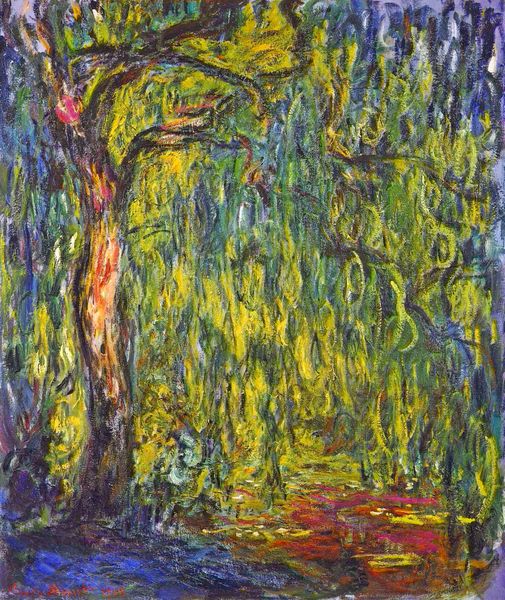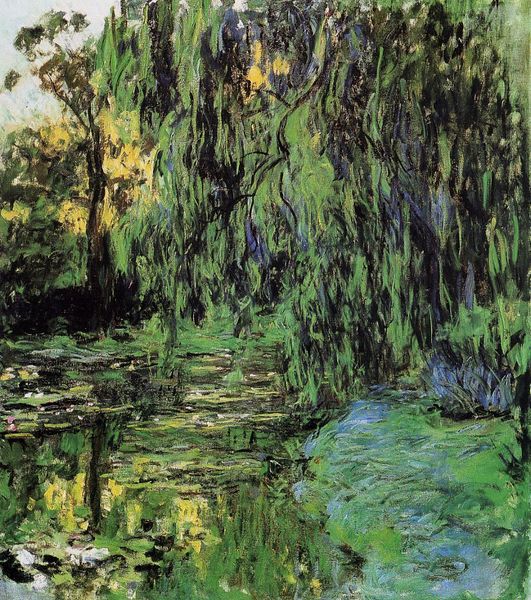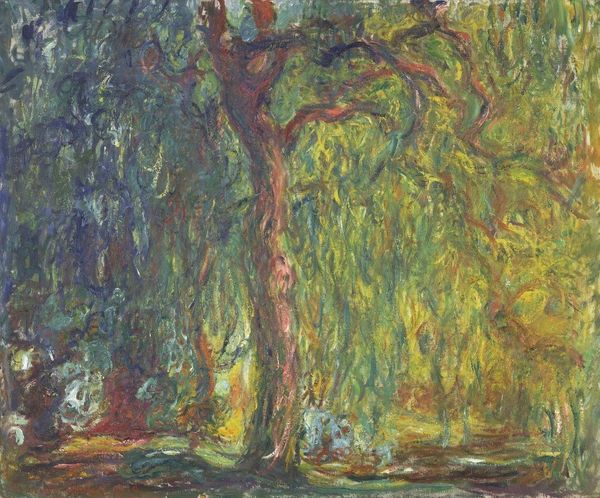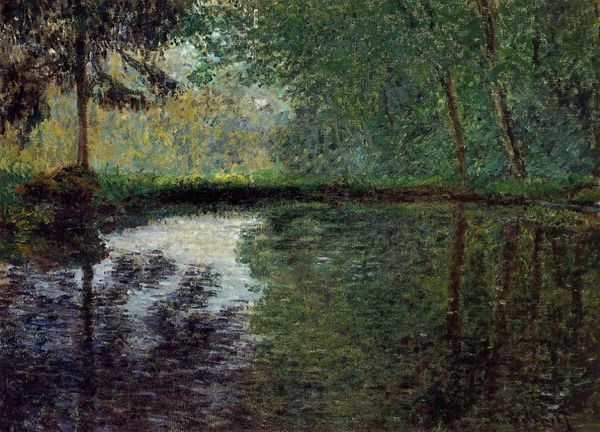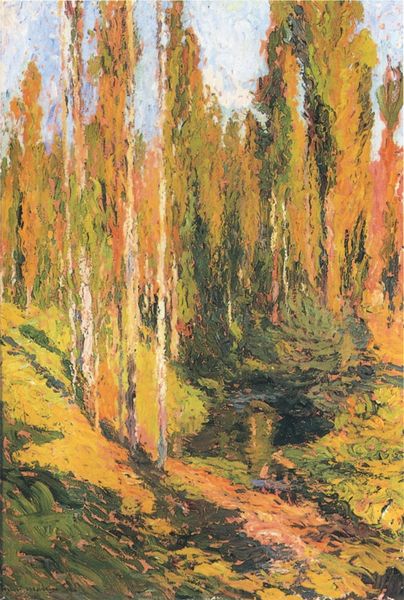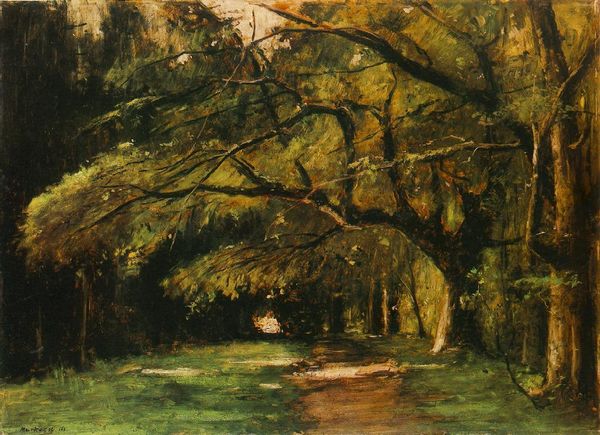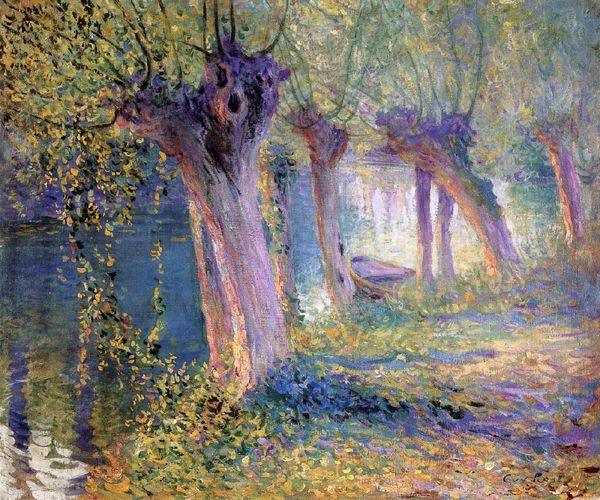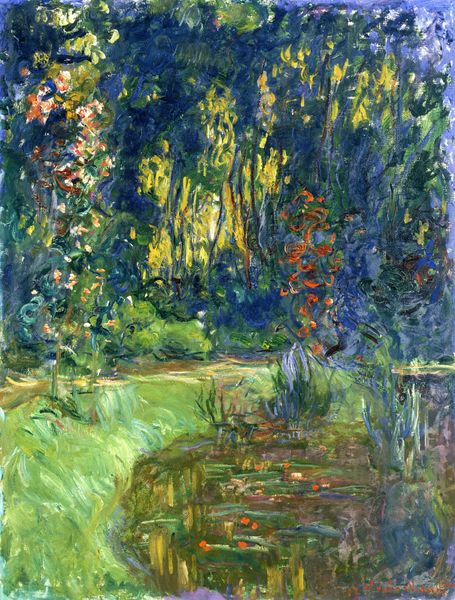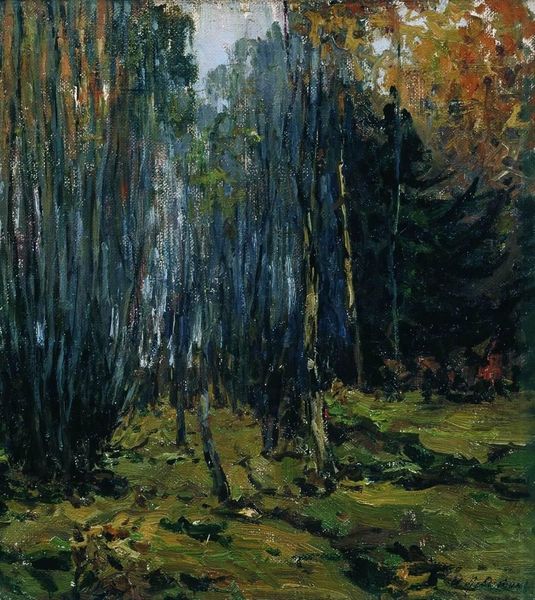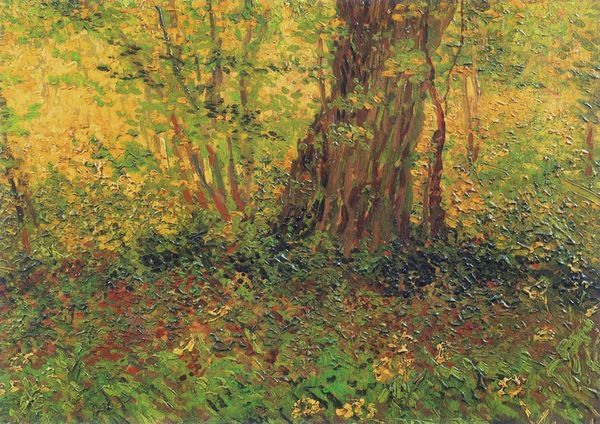
Copyright: Public domain
Claude Monet made this painting of a weeping willow with oil on canvas. Impressionist painters like Monet built their careers around the direct observation of nature, working en plein air. This meant taking their materials – canvases, easels, brushes and pigments – out of the studio. Monet was particularly interested in capturing fleeting effects of light and atmosphere. Here, we see how the willow's delicate branches droop and sway, reflecting sunlight on their surfaces. The oil paint is applied in short, loose brushstrokes. This technique creates a sense of movement and energy, almost as if the tree is breathing. In terms of the labor involved, consider that Monet had to transport his materials, set up his easel, and work quickly to capture the ephemeral light. We must appreciate the physical act of painting and the artist's engagement with the natural world. The painting is the result of the artist's vision and the process of applying paint to canvas.
Comments
No comments
Be the first to comment and join the conversation on the ultimate creative platform.
